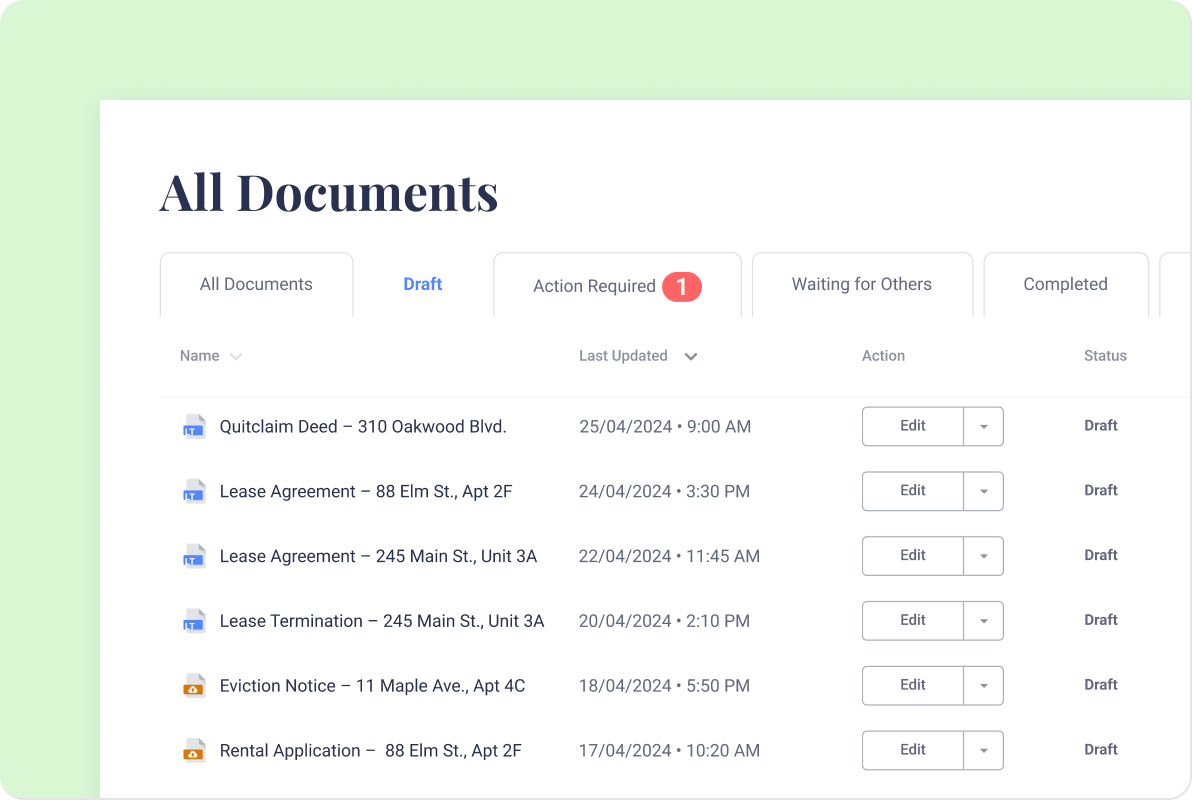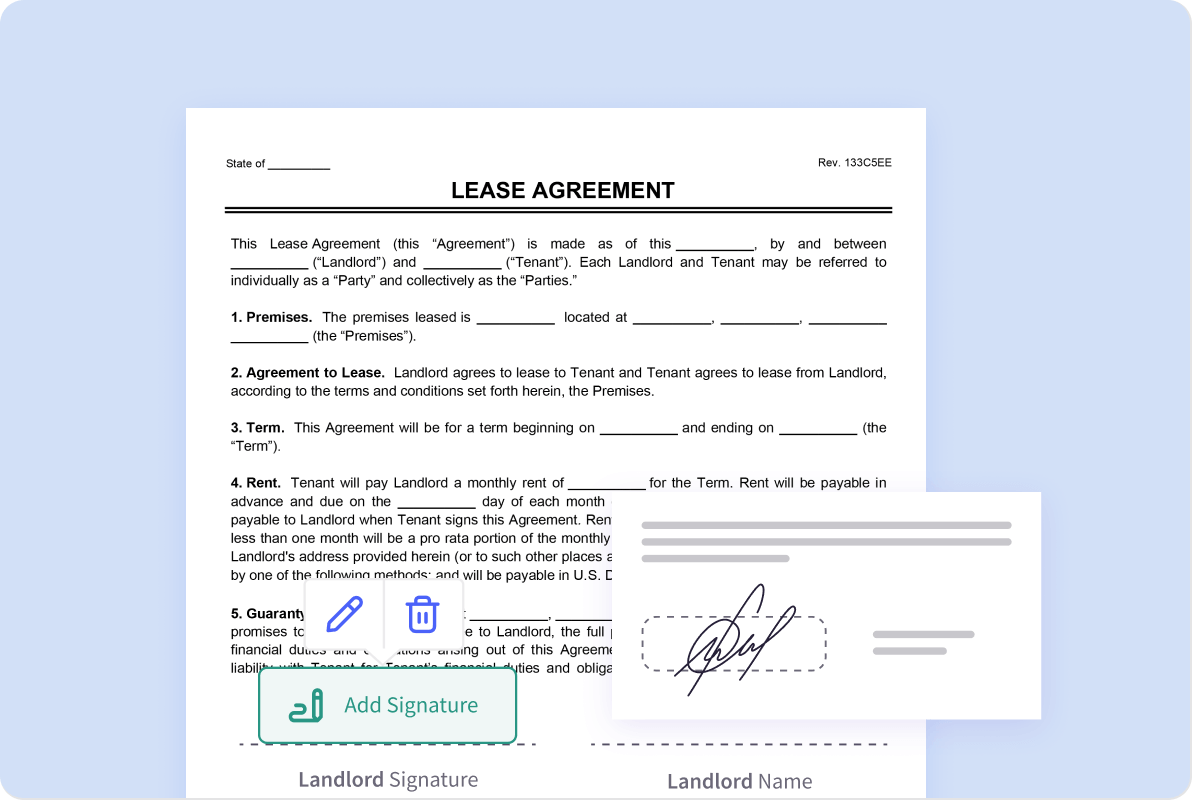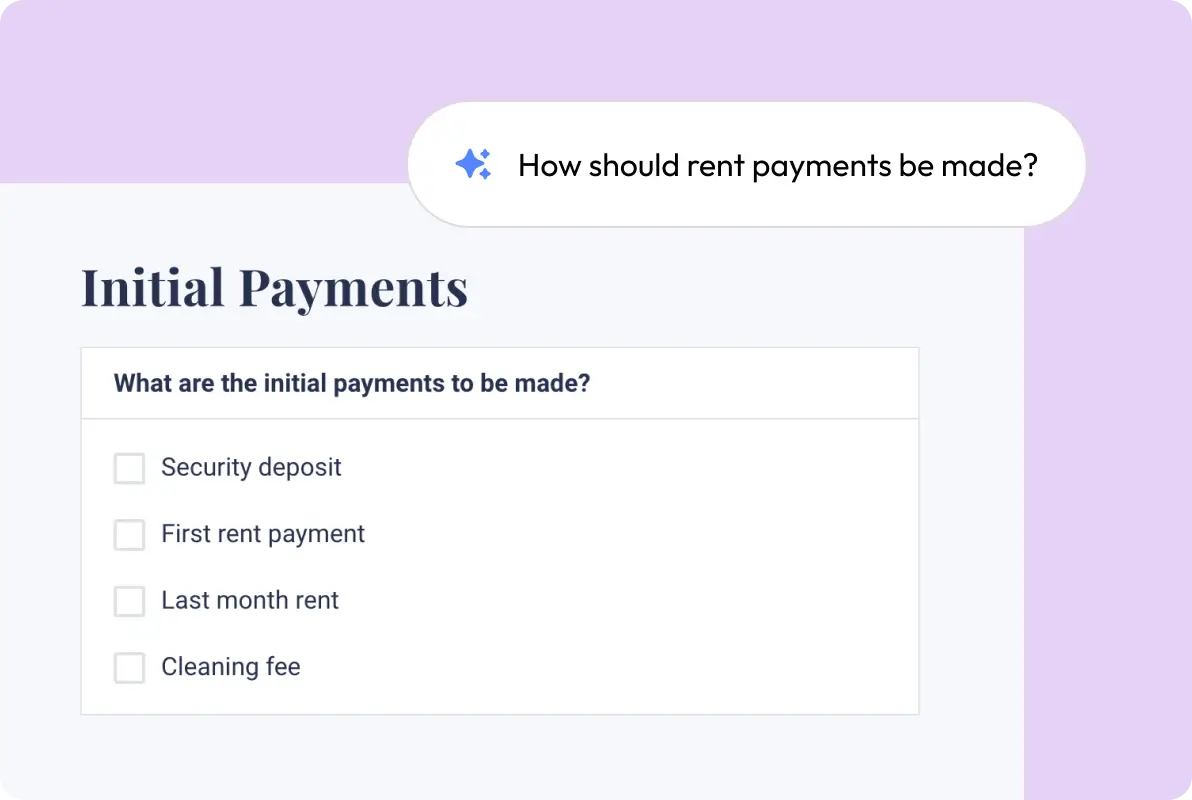What is a Quitclaim Deed?
A quitclaim deed is a legal document that transfers property, usually between family or close friends. For example, a parent might use it to give property interests to their child.
This deed doesn’t come with promises, so it’s best when both people trust each other and know the property’s history. If you want full protection and a guarantee on the title, a warranty deed might be a better option.
Quit Claim Deed or Quick Claim Deed?
A quit claim deed form may be mistakenly called a “quick claim deed,” but “quit claim deed” or “quitclaim deed” is the correct legal term.
Quitclaim Deed vs. Warranty Deed
Unlike quitclaim deeds, warranty deeds offer varying degrees of protection and warranties for the grantee. Special warranty deeds guarantee the grantor has not created any title defects or financial encumbrances during their ownership. However, they do not provide a warranty to cover title issues that may have occurred before the grantor owned the real property.
General warranty deeds provide the strongest property transfer guarantees. They are used during property sales or transfers of ownership between two unacquainted parties and promise a clear title, free from any prior liens or financial obligations. The grantor also provides a warranty vouching for the property title’s validity under all previous owners.
| Factor | Quitclaim Deed | Special Warranty Deed | General Warranty Deed |
|---|---|---|---|
| Warranties | No warranties | Covers only the seller’s ownership period | Covers the title's entire history |
| Common Use | Family transfers, gifts, correcting title errors | Commercial real estate, bank-owned homes, estate sales | Traditional home sales, most residential transactions |
| Protection for Buyer | None | Limited | Strongest |
| Liability of Seller | No liability once the transfer is complete | Only for title issues during ownership | Liable for all past title issues |
How to Fill Out a Quitclaim Deed
Prepare to write a quitclaim deed by gathering relevant information about the grantor and grantee, property details, and the conditions under which the transfer will occur.
Legal Templates suggests you use a state-specific quitclaim deed form as a best practice.
1. Fill in the Preparer’s & Recipient’s Names and Addresses
Provide the full name and address of the individual preparing or writing the quitclaim deed. The preparer may be the grantor, grantee, or a third party.
Write the name and address of the person who should receive the recorded deed and tax statements after recording.
2. Enter the Effective Date & Grantor’s Details
State when the deed will become effective. Then, fill in the full name of the grantor, who is the property’s current owner. Our template lets you indicate whether they are an individual, a married couple, or an entity (i.e., corporation, LLC, partnership, or trust).
Provide the mailing address for the grantor. If there is more than one grantor, provide just one mailing address to receive correspondence.
3. Fill in Grantee’s Details
Write the full name of the grantee, who is the individual or entity that will become the new owner. Indicate if the grantee is an individual, multiple individuals, a married couple, or an entity.
4. Identify Transfer & Property Details
Enter the amount of money paid as consideration for the real estate transfer. If the property is transferred as a gift, you can specify a nominal amount, such as $10, as consideration.
Write the county and state where the property is located. Specify whether the property is in an unincorporated area.
Include identifying information like property location, parcel number, and legal description. The legal description identifies the property by a government survey, metes, bounds, or lot and block. You can find this description in the property’s deed or through the county assessor.
5. Choose Ownership Option & Exceptions
Specify how the new owners will hold the property. We have included the most common forms of property ownership on our form.
State whether there are any exceptions to the property, such as an easement (reserve right to continue using a portion of land), covenant, reserve life estate, or mineral rights.
6. Identify Homestead Option
Check whether the property is the grantor’s homestead. Generally, a homestead is a person’s primary residence.
7. Choose Transfer Tax Option
Specify whether the property transfer is exempt from transfer tax. Refer to state or local laws, as many states provide various exemptions from transfer tax, such as transfers between parent and child. If not exempt, specify the transfer tax the grantor or grantee will pay for the transfer.
8. Identify Witnesses
Most states require others to witness and notarize a quitclaim deed document to ensure its authenticity. Even if your state doesn’t, it’s still a good idea because it helps legitimize the document’s validity, preventing legal challenges down the road. Provide the names and details of witnesses and have them sign the document.
Notarization Requirements
Be sure to fulfill your state’s notarization requirements for a quitclaim deed.
How to File a Quitclaim Deed
You must file the quitclaim deed with your local county recorder’s office to create a public record of the transfer of ownership, give public notice, and prioritize the grantee’s claim of ownership. Check local requirements to make sure you file at the correct location.
Filing with the local county recorder or clerk does not guarantee a perfect title, but it creates a public record of a new claim to ownership.








